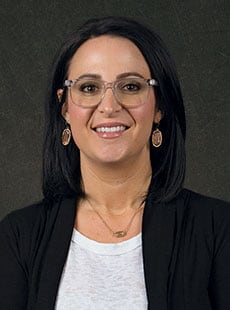 Course Introduction
Course Introduction
Core Standards of the Course
Strand 1
Students will be able to read aircraft drawings and be able to create drawings for proposed maintenance procedures using industry standard drafting techniques.
Standard 1
Identify the purpose and function of aircraft drawings.
Standard 2
Identify types of aircraft drawings:
Standard 3
Explore methods of illustration:
Standard 4
Understanding drafting lies and their meaning.
Standard 5
Understand dimensioning of a drawing:
Standard 6
Read aircraft production drawing.
Standard 7
Apply aviation math with respect:
Standard 8
Identify techniques used in sketching/drafting.
Standard 9
Present drawings and discuss feature in the drawing's graphic presentation of information.
Strand 2
Students will understand the causes of and how to identify, control and clean corrosion.
Standard 1
List corrosion inspection cleaning and control procedures.
Standard 2
Understand corrosion-an electro chemical action.
Standard 3
Identify the types of corrosion:
Standard 4
Identify corrosive agents:
Standard 5
Understand methods of detection of corrosion:
Standard 6
Identify corrosion-prone areas.
Standard 7
Understand removal and treatment of corrosion:
Standard 8
Explore corrosion prevention:
Strand 3
Students will understand importance and calculation of weight and balance for various kinds of aircraft.
Standard 1
Understand importance of weight and balance and identify effect of flight control abilities.
Standard 2
Principles of weight and balance.
Standard 3
Define terms used in weight and balance:
Standard 4
Identify weighing procedures:
Standard 5
Describe procedure for locating the balance point.
Standard 6
Understand the center of gravity:
Standard 7
Describe shifting the center of gravity.
Standard 8
Understand adverse-loading center:
Standard 9
Understand why weight and balance changes after and alterations:
Standard 10
Understand helicopter weight and balance:
Standard 11
Identify ranges for loading and weight distribution:
Strand 4
Students will develop a respect for maintenance forms & records and understand the requirement for accuracy and detail.
Standard 1
Identify Federal Aviation Regulations (FAR):
Standard 2
Identify permanent records:
Standard 3
Identify temporal records.
Standard 4
Read and use forms:
Standard 5
Understand the purpose of the Federal Aviation Administration.
Standard 6
Identify personnel certification:
Standard 7
Understand maintenance and inspection requirements:
Strand 5
Student will obtain a general familiarization with and understand the purpose of maintenance publication- General familiarization and purpose.
Standard 1
Identify maintenance publications.
Standard 2
Federal Aviation Regulations.
Standard 3
Advisory circulars.
Standard 4
Type certificate data sheets, aircraft specification and aircraft listings.
Standard 5
General aviation airworthiness alerts.
Standard 6
Airworthiness directives.
Standard 7
Microfiche system for keeping publications current.
Standard 8
A.T.A Specification 100
Standard 9
The Federal Aviation Administration.
Standard 10
Personnel certification.
Standard 11
Maintenance and inspection requirements.
Strand 6
Students will understand the privileges and limitation of aircraft mechanics.
Standard 1
Understand Federal Aviation Regulations-FAR part 65.
Standard 2
Understand the purpose of The Federal Aviation Administration with respect to oversight, suspension and revocation of privileges
Standard 3
Identify personnel certification.
Standard 4
Understand Maintenance and Inspection Requirements-Part 43, manufacture and component maintenance requirements.
Strand 7
Students will understand aircraft.
Standard 1
Identify the purpose and function.
Standard 2
Identify rigid fluid lines.
Standard 3
Observe fabricating rigid tubing.
Standard 4
Identify flexible fluid lines.
Standard 5
Understand fluid line fittings.
Standard 6
Observe fluid line installation.
Strand 8
Students will review and apply mathematics as it applies to aviation.
Standard 1
Understand basic math concepts including whole numbers, fractions, decimals, and percentages.
Standard 2
Perform metric to standard conversions unit 1 metric conversions.
Standard 3
Understand equations and formulas.
Standard 4
Extract roots and raise numbers to a given power. (LEVEL 3)
Standard 5
Calculate power and roots.
Standard 6
Understand percentages.
Standard 7
Rate, percent, base, amount, and difference:
Standard 8
Understand algebraic operations:
-
Perform algebraic operations involving addition, subtraction, multiplication, and division of positive and negative numbers. (LEVEL 3)
- Use symbols and system schematics to create an aircraft drawing. (LEVEL 2)
- Identify commonly used aircraft electrical and electronic symbols. (LEVEL 2)
- Identify lines and symbols. (LEVEL 2) * Use diagrams and schematics to perform and installation. (LEVEL 2)
- Draw sketches of repairs and alterations. (LEVEL 3)
- Make sketches. (LEVEL 3)
- Use blueprint information. (LEVEL 3)
- Trace circuits with aircraft wiring diagrams. (LEVEL 3)
- Interpret dimensions. (LEVEL 3)
- Read and interpret drawings. (LEVEL 3)
- Interpret installation diagrams. (LEVEL 3)
- Use graphs and charts to ensure installation or repair meets manufacturers specifications. (LEVEL 3)
- Use manufactures charts and graphs. (LEVEL 3)
- Identify and select appropriate cleaning materials. (LEVEL 3)
- Identify caustic cleaner. (LEVEL 3)
- Identify cleaning agents for aircraft engine parts. (LEVEL 3)
- Select and properly use PPE for the chosen cleaning material.
- Identify, remove and treat aircraft corrosion and perform aircraft cleaning. (LEVEL 3)
- Identify and remove corrosion on aluminums. (LEVEL 3)
- Remove oxidation - Ferrous base (Level 3)
- Clean and preserve rubber products - de-ice boots, prop heating elements. (LEVEL 3)
- Weight and balance lab.
- Weigh aircraft in accordance with manufacture specifications and procedures. (LEVEL 3)
- Locate, interpret and apply weight and balance information. (LEVEL 2)
- Perform complete weight and balance check and record data. (LEVEL 3)
- Solve Weight and balance problems. (LEVEL 3)
- Compute forward and aft loaded center of gravity. (LEVEL 3)
- Compute weight and balance on a helicopter. (LEVEL 3)
- Examine weight and balance records. (LEVEL 3)
- Calculate complete weight and balance and loading for passengers and cargo in preparation for flight.
- Complete required maintenance forms, records and inspection reports. (LEVEL 3)
- Make maintenance record of work performed. (LEVEL 3)
- Use inspection guides-
- Part 43 Appendix D
- Aircraft Manufacture
- Component Manufacture Requirements. (LEVEL 3)
- Fill out a malfunction and defect report-Form 8010-1 (LEVEL 3)
- Demonstrate ability to read, comprehend and apply information contained in FAA and manufactures aircraft maintenance specifications, data sheets, manuals, publication, and related federal aviation regulations, airworthiness directives and advisory material on aircraft component or appliance of choice. (LEVEL 3)
- Locate reference data including Ad and advisory circular. (LEVEL 3)
- Use information from the aircraft specifications or type certificate data sheets to determine conformity. (LEVEL 3)
- Find information in the manufactures manuals to determine maintenance procedures. (LEVEL 3)
- Locate information in 14 CFR-to determine form and block entry requirement. (LEVEL 3)
- Read technical data. (LEVEL 3)
- Select and use supplementary type certificates and airworthiness directives. PMA, TSO and Advisory Circulars, applicable to specific aircraft or appliance. (LEVEL 3)
- Exercise mechanic privileges within limitations prescribed by part 65 of this chapter. (LEVEL 3)
- Interpret 14 CFR Part 65 for licensing activity. (LEVEL 3)
- Fabricate and install rigid and flexible fluid lines and fittings. (LEVEL 3)
- Bend and form aluminum tubing and determine pressure capabilities based on materials and fittings selected. (LEVEL 3)
- Fabricate flares on tubing. (LEVEL 3)
- Fabricate and install flexible hoses tubing and determine pressure capabilities based on materials and fittings selected. (LEVEL 3)
Workplace Skills
Students will develop professional and interpersonal skills needed for success in industry. Determine the difference between hard skills and soft skills.
- Hard Skills: Hard skills are specific, teachable abilities that can be defined and measured
- Soft Skills: Personal attributes that enable someone to interact effectively and harmoniously with other people.
Identify soft skills needed in the workplace
- Professionalism
- Respect legal requirements/expectations
- Good communication skills
- Resourcefulness & creativity
- Work ethic


 UTAH EDUCATION NETWORK
UTAH EDUCATION NETWORK

 Justin
Justin Braxton
Braxton Dani
Dani Kayla
Kayla Katie
Katie Lora
Lora Rob
Rob Val
Val
